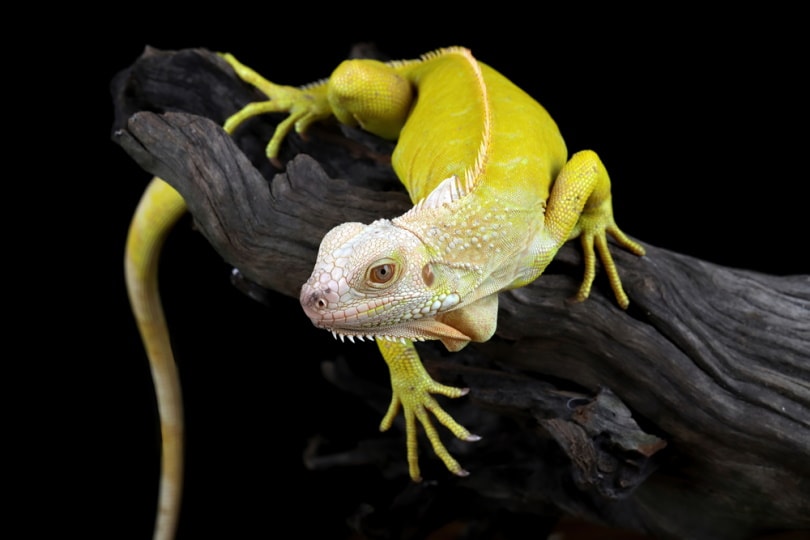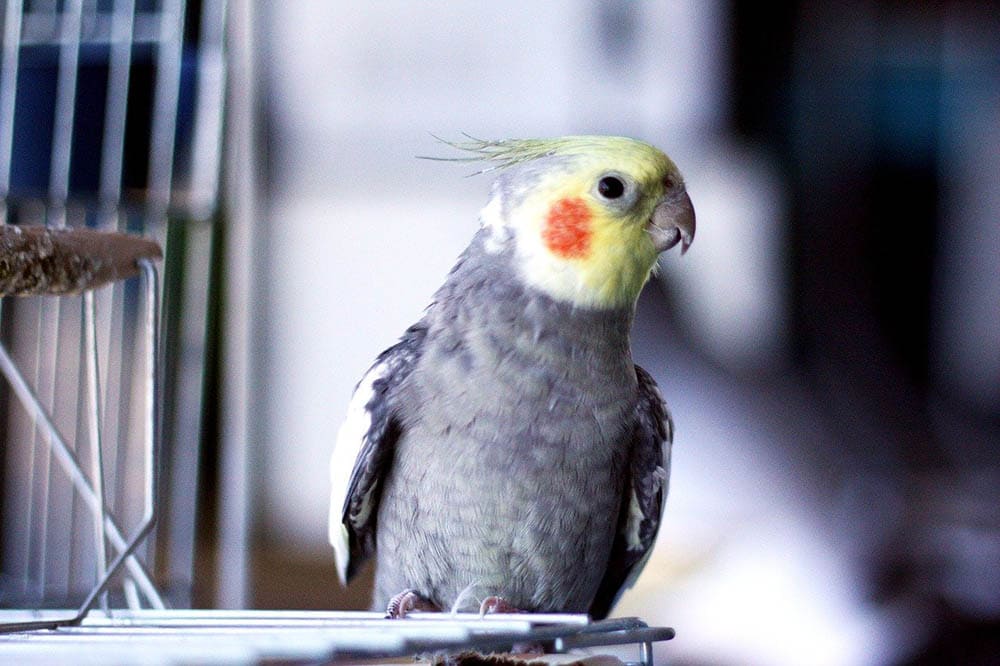While we generally associate color-changing skin with chameleons, many reptiles change color over time. The iguanas usually kept as pets are green iguanas (Iguana iguana). Despite their name, though, their coloring can vary from bright reddish-orange to gray-blue.
This reptile’s skin may also become a different color. Iguanas change color over their lifespan and during different seasons. Here are a few of the reasons that an iguana’s skin might change color.
The 5 Reasons Iguanas Change Colors
1. Aging
Iguanas change color as they age. Most will start as a bright green or blue with some brownish striping down the body and tail. The iguana’s primary coloring will become less intense as they age.
Conversely, the striping on their tail and body will get darker and more intense as they get older. Some iguanas may start to have a reticulated pattern of color with the striping as they get older. The intensity of the striping on their body will change until they’ve reached approximately 18 months old.
In addition to their base coloring, older iguanas tend to have paler coloring on their heads than the rest of their bodies.
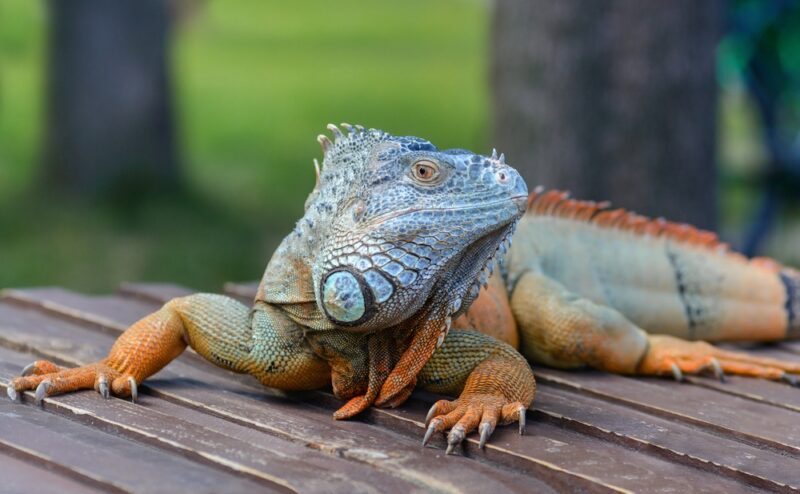
2. Breeding Season
Male iguanas develop an orange to reddish-orange coloring during the breeding season. In some iguanas, the color will be present over the whole body, while others may only have the orange coloring in specific areas, such as the dewlap, spikes, body, or legs. Female iguanas may also develop an orangish color during the mating season, though it is usually less saturated and intense.
Some dominant males and females will retain the orangish coloring after the mating season ends. The iguana will have the coloring in the presence of other iguanas or even cats, dogs, or humans toward whom the iguana feels dominant.
3. Environment
The environment an iguana lives in also influences the appearance and color of their skin. There are many ways that their environment may influence their coloring. For instance, a cold iguana will take on a darker shade. The darker color of their skin helps them absorb and trap heat to keep them warm! In addition to a darker color, an iguana that is too cold may develop dark, wavy lines on their head and body.
Conversely, an iguana kept in too hot of an environment will take on a lighter coloring. This process of color change in response to the temperature is called “physiological thermoregulation.”
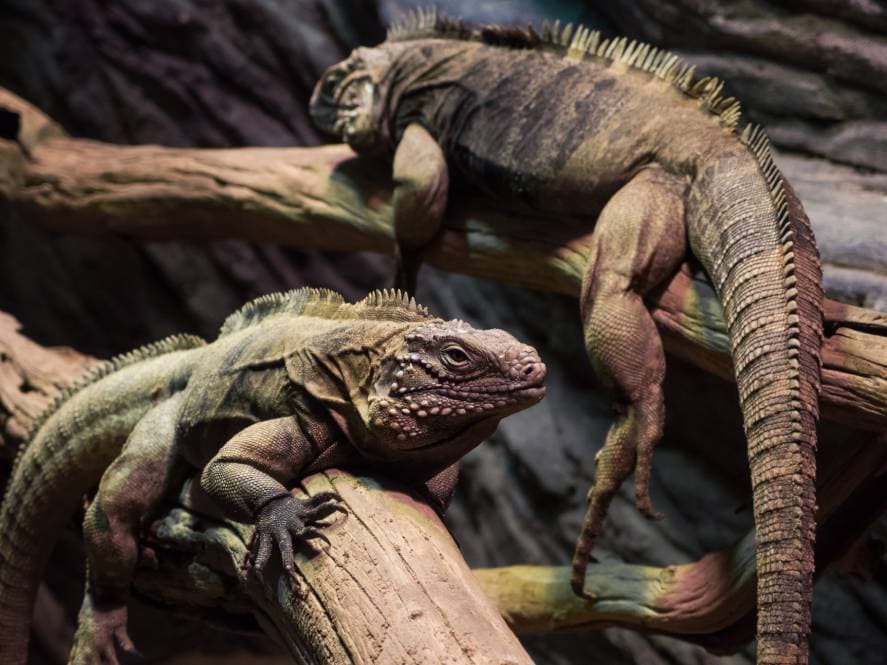
4. Shedding
Iguanas’ skin changes color a few weeks before they shed. Unlike snakes, iguanas don’t shed their entire skin at once. They shed their skin in patches, and before the skin sheds off, the skin will appear dull and take on a greyish or yellowish tone. The skin will turn white just before it falls off.
5. Disease
These reptiles can also change color because of disease. While many color changes in an iguana’s skin are natural and benign, there are notable colorings that iguana owners should watch out for.
- Red mite infestations: If your iguana’s skin starts to turn black and the scales look raised, this is a sign of a red mite infestation. These dark black scales shouldn’t be confused with the usual dark stripes or reticulating patterning. Red mite infestations are usually visible on the bell and the limbs. Black scales can also be a sign of a fungal infection.
- Skin issues: If your iguana sustains a skin injury, the skin will appear pink and without scales until the wound heals. Burns to the skin may appear black, and the affected area will grow smaller with each subsequent shed of the skin.
- Bacterial Infections & More: Iguanas can get a bacterial infection of the skin known as “scale rot,” “blister disease,” or “vesicular dermatitis.” This causes blisters on the skin that turn the skin dark brown and then black. If left untreated, this disease can be fatal. It’s usually caused by living in an unclean cage. Parasitic infections, malnutrition, gastrointestinal blockage, constipation, and other illnesses can cause the skin to turn a mustard-yellow color, not to be confused with the typical yellowing of the skin before shedding.
Other stressors may induce a color change in your iguana, including but not limited to poor cage environment (too hot, cold, moist, dirty, etc.), fear of a cage mate that is a bully or of a person or other animal in the house, or significant changes in the household routine (moving, new pet or baby, etc.)
In general, any color changes not related to breeding season or shedding should be brought to the attention of your veterinarian. An experienced exotic vet will be able to determine whether the color change is a problem and help you develop a plan to fix any issues that may have arisen with your pet.
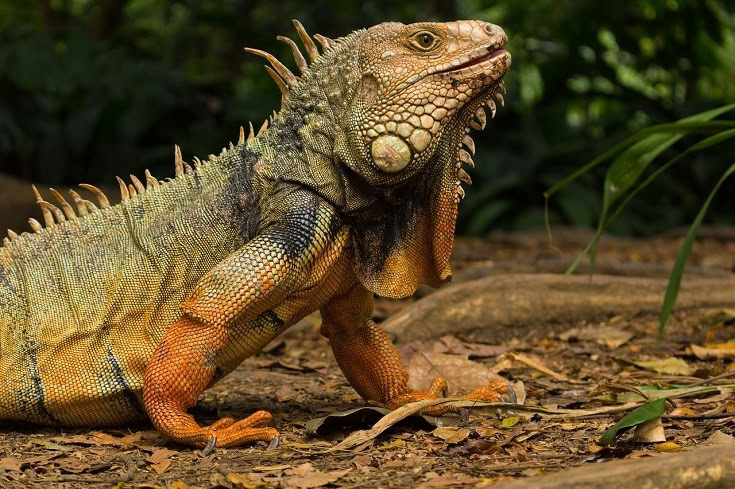

Final Thoughts
While iguanas may not change color at will like chameleons, they undergo coloring changes throughout their lifetime. It’s essential to get to know your individual iguana’s color changes, so you can immediately know if there’s a problem with their health.
An exotic veterinarian should examine any unusual color changes. They will be able to advise you on anything that you experience with your iguana that might concern you, even if it’s just reassuring you that everything is okay.
- See Also: Fiji Banded Iguana
Featured Image Credit: Kurit afshen, Shutterstock
